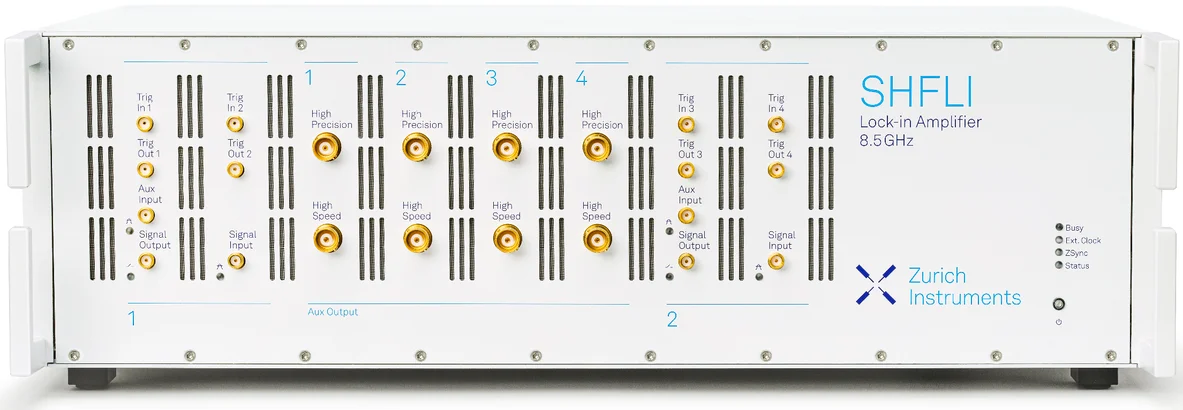Reduce Drift and Improve Performance With On-Instrument Feedback
All measurement setups suffer from drift and need regular optimisation to ensure the best performance. A PID controller on a lock-in amplifier frees you from this burden by enabling real-time, automated closed-loop control in your experiments. This improves stability, reduces complexity, and allows sensitive experiments to remain tuned to optimal working points without constant user intervention.

Why Merge a Lock-in Amplifier with PID Controllers?
Lock-in amplifiers are well known for their ability to extract weak AC signals in a noisy background. But often, measuring is not enough; you need to be able to act on the measurement, and an instrument which can measure and then make real-time corrections brings a new functionality to your experimental setup.
While manual stabilization is subject to drift, human error, and slow response times, an integrated PID controller applies corrections continuously and precisely, allowing the lock to remain stable over hours or days — crucial for long data runs or sensitive experiments.
Zurich Instruments offers an innovative solution for on-instrument feedback controllers in the shape of their PID options for all lock-in amplifiers across its portfolio. Up to four integrated PID controllers means the system is self-contained and robust — no extra programming, external wiring, or synchronization headaches.
Onboard PID controllers respond to errors on timescales limited only by the lock-in time constant and controller loop time. This is much faster than routing signals through a PC for feedback processing. This lower latency means your system can stay locked even when the environment is noisy or varying rapidly.
The PID controllers of Zurich Instruments Lock-in Amplifiers can be used to create feedback schemes ranging from a simple PLL to more advanced multiple-frequency feedback and Pound-Drever-Hall configurations for phase insensitive feedback.
Product Highlights
What’s Your Application?
To learn more about how PID controllers can bring new levels of stability and precision to you measurements, get in touch to set up a call with our application specialist in your region. Or, browse the list below of our dedicated application pages and learn how your research can benefit with our instruments.
Webinar
A sensor generates an electrical signal that depends on the physical quantity we aim to measure. Achieving the desired performance is an iterative process that begins with finding suitable materials, sensing methods, and control parameters. A complete toolset to characterize the prototype with efficient workflows is crucial to keep up with the project timelines. In this webinar, Kıvanç Esat and Jim Phillips present the measurement requirements, discuss the essential tools, and explain best practices with examples to accelerate your testing.
Customer Success Stories
Find out how Zurich Instruments' users are boosting their measurements.
The MFLI's PID controller functionality has been essential for scanning probe microscopy with tunable settings. The user-friendly LabOne interface makes it straightforward to change parameters in real-time while monitoring the results, and can also be seamlessly integrated into existing measurement software on other platforms.

Dr. Dahlia Klein
University of ChicagoZurich Instruments' digital lock-ins have been of great value for my project on resonant mass sensors. Measurement schemes such as lock-in detection or phase-locked loops have been known for decades, but they have never been so easy to implement and configure.

Dr. Tomás Manzaneque García
TU DelftZurich Instruments AG 2025 | Standard Terms & Conditions | Website Terms of Use | Privacy Policy







